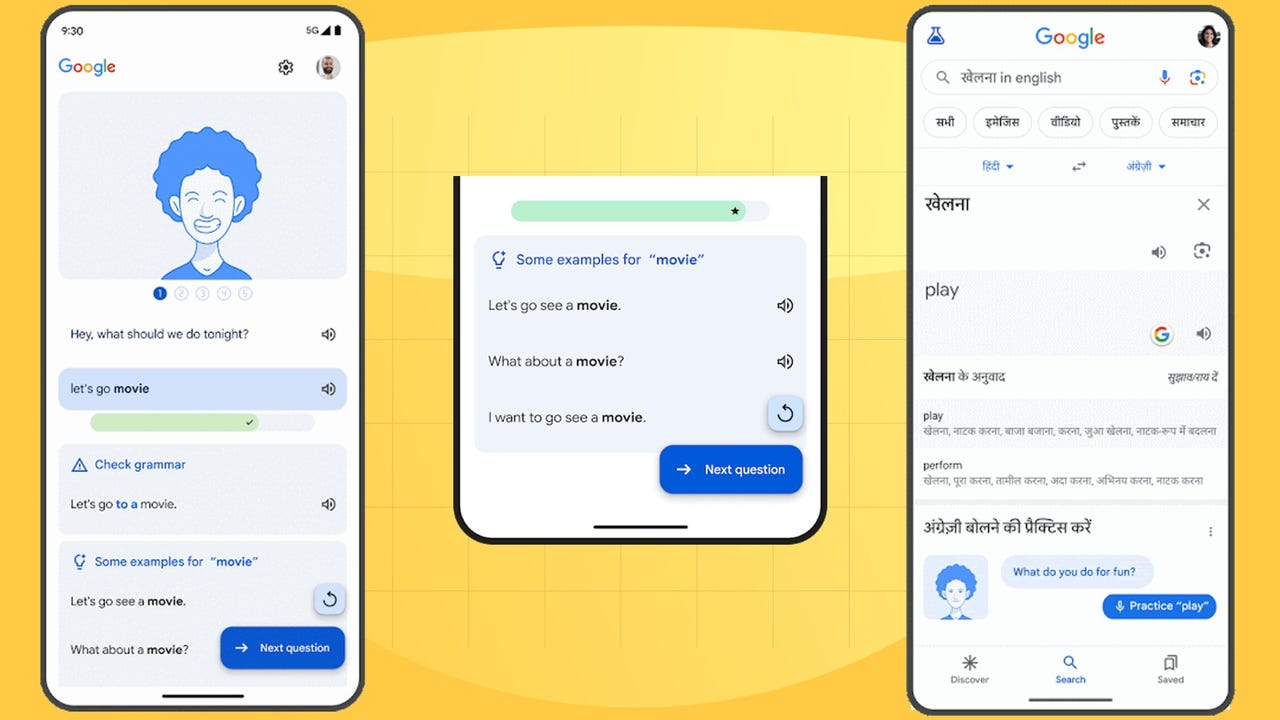Google's new AI-powered tool helps users learn English right in Search

When learning a new language, it's imperative that the speaker immerse themselves in the language's books, movies, TV shows, and music. It's also important for the speaker to regularly converse with native speakers to understand cultural jargon, slang, and colloquial expressions.
Also: How to supercharge your Google searches with AI in Chrome
But it's not always easy to visit the country whose language you want to learn, and consuming a foreign language's media can be difficult when you're still a novice speaker.
To help with this issue, Google announced a new interactive feature within Google Search to help people learn English.
The feature is currently available to Android users in Argentina, Colombia, India, Indonesia, Mexico, and Venezuela. Users can translate to or from English in Google Search, and Search will provide them with prompts, short practice sessions, and personalized feedback.
Search will provide users with semantic feedback, which tells them how to improve their sentences and provide examples of correct answers.
Contextual translations allow users to understand how an English contextual word (words that have one definition on their own, but take a different meaning when used in a sentence) translates in their native tongue.
Also: Chrome's new address bar features automatic typo correction, better autocomplete, and more
Google uses deep learning models, large language models, and machine learning to improve users' grammar and semantics, as well as their proficiency.
English, like any other language, is difficult to learn, especially if your native tongue is not linguistically related to English. English is riddled with verb irregularities, linguistic exceptions, and complex grammatical structures, which can be difficult for learners to overcome on their own.
However, learning English can present many opportunities for those around the world, which is Google's main justification for creating this feature.
Google Translate is Google's staple free translation service which the company released in 2006. Google Translate is a valuable tool for basic interlingual translations, like simple one-word, one-phrase, or basic sentence translations.
Also: This new AI dubbing tool can translate audio while preserving the speaker's voice
But Google Translate is sometimes unreliable for carrying out interlingual conversations that require a deep understanding of languages and how they relate to one another.
Parts of language that can be difficult for Google Translate to convey are contexts (pragmatics), vocabularies (lexicon), structural rules and agreements (grammar), and how individual words combine to create sentences (syntax).
For now, Google Search's language learning feature is only available in English to select countries. Google says it will expand the feature to more countries and languages in the future.
